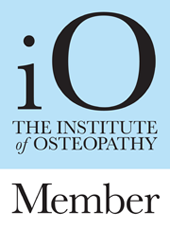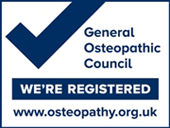Pain in Pregnancy
Introduction
First and foremost, congratulations! Pregnancy is an incredibly special time for an expecting mother and the unborn child. In pregnancy the body will undergo big changes in a short period of time.
Osteopathic treatment is helpful for many women throughout their pregnancy and post-partum. It can help with pain reduction, preparation for labour, recovery from the strains of birth and looking after the new baby.
During pregnancy the body undergoes a great amount of change to accommodate the developing foetus. Postural changes and increased weight (up to 20kg) are key factors affecting all expectant mothers. Other changes might be more subtle, such as the effects of a hormone called relaxin softening the ligaments throughout the body and the position of the growing baby. These two combinated can put additional pressure on the joints and muscles of the spine and pelvis.
If the body adapts well to this increase in size and weight, often an expectant mother will breeze through pregnancy and will experience minimal pain and discomfort. If the body has trouble accommodating these changes, undue strain can be placed on the spine, neck and shoulders causing pain and discomfort.
The most common complaints during pregnancy are:
- Low back pain
- Sciatica
- Pelvic Girdle Pain and Pubic Symphysis Dysfunction (PGP/PSD)
- Shortness of breath
- Postural fatigue (neck, shoulder and upper back pain)
- Carpal tunnel syndrome
- Swollen legs and ankles
- Headaches
- Constipation
- Insomnia
- High blood pressure
- Fatigue
- Disturbed sleep
Research studies have shown that as many as 70% of pregnant women will suffer with low back pain (Mogren & Pohjanen, 2005).
How can osteopathy help?
Osteopaths aim to assist the natural process of pregnancy and birth by supporting the body as it adapts and to all of the changes that occur during a progressing pregnancy. This is achieved by using safe and efficient techniques, while ensuring that the expectant mother is comfortable and well informed at all times.
During a natural vaginal delivery, a range of factors influence the descent of the baby though the pelvis. Trauma to the pelvic bones, coccyx and/or sacrum at any time in a mother’s life can leave increased tension in muscles and strain within the ligaments and bones of the pelvis. This can limit the ability of these bones to separate and move out of the way during labour, limiting the size of the pelvic outlet. This can interfere with the baby’s passage through the birth canal. Osteopathic treatment can help to align the body so that the pelvis and lower back mechanics are in the best possible position they can be and with as little tension or restriction as possible. Osteopathic treatment will maximise the body’s ability to changes and support the expectant mother and baby with minimum pain and discomfort.
Is osteopathy safe during pregnancy?
Osteopathy is safe and gentle for both the expectant mother and the baby. The osteopathic techniques used are gentle and carefully selected to minimise any risk. Treatment may be adapted to suit each patient and comfort and knowledge is paramount.
Due to the delicate nature of pregnancy, during weeks 12 and 16 (risk of miscarriage) treatment is avoided or heavily modified for those weeks.
Postnatal treatment
Depending on the type of labour experience, some mothers may have a range of uncomfortable / frustrating symptoms postnatally. The pelvis is vulnerable to lasting strains from the forces involved in labour, particularly after a difficult delivery. During childbirth the pelvis can become distorted to allow the baby’s head to descend. In many cases this distortion corrects itself, but if severe it can remain for many years and disrupt spinal and pelvic mechanics.
It is common for new mothers to experience the following pains post-partum:
- Lower back and pelvis pain
- Pelvic girdle and pubic symphysis pain (PGP / PSD)
- Upper back pain associated with breastfeeding
- Neck pain
- Headaches
- Wrist pain
Osteopathic treatment can help to restore and maintain normal pelvic alignment and mobility, taking away pain and discomfort. If there are unresolved childbirth stresses from labour, these can contribute to both ongoing back problems and difficulties with menstruation, stress incontinence and bowel problems (e.g. constipation) and headaches.
After childbirth, the body needs to recover from the changes made during pregnancy and from the effects of delivery. It also needs to cope with the demands of having a new baby. Caring for a baby can place enormous strain on the back, during daily activities as:
- Breastfeeding or nursing in poor positions
- Lifting car seats in and out of the car
- Reaching over the cot
- Carrying a child on one hip
Osteopathic treatment can help with these aches and pains in conjunction with lots of helpful advice on such things as: best feeding positions, how best to carry a car seat, correct posture for changing nappies).
If you have any questions, please do not hesitate to contact us today: 01525 290615.


